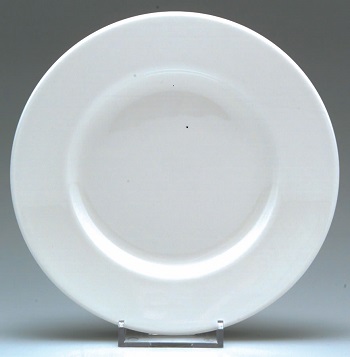Content Literacy Skills: Building a Stronger Plate

I recently read an article in the Washington Post about one school district’s plan to make an overhaul of literacy instruction a priority, especially in its high schools. The Prince George’s County School District in MD set a goal of ensuring that by 2020, 90 percent of its students graduating from high school will be prepared for college and the work force. The district decided to fully embrace the Common Core focus that instruction in reading, writing, speaking, listening, and language be a shared responsibility among all content teachers within a school – literacy instruction is being filtered into every subject classroom, including math, science, and health class.
According to the article, the district recognized that in order to truly learn content and develop the literacy skills needed after graduation, students needed more explicit instruction about how to read, think, and write in every subject. “They need to be able to glean meaning not just from literature in English class, but also from historical primary sources, scientific articles, and other (sometimes dense) works of nonfiction.”
I work with a lot of content teachers around literacy instruction. Over the past decade or so, I have seen a growing recognition by middle and high school content teachers that they should play a role in improving their students’ literacy skills. However, many of these content teachers claim they do not have time to teach literacy. They say, “My plate is too full with the content I have to cover to add anything else.” They see teaching literacy skills as another thing they have to take time out to teach in addition to the science, history, or math content that may already be overwhelming to cover.
As literacy educators, we have to acknowledge these concerns. But we also have to convince content teachers that literacy specialists alone can’t meet the needs of the very large numbers of students who struggle with reading and writing. I sometimes extend the “plate” metaphor as a way to get teachers to consider integrating literacy instruction along with content teaching:
Rather than thinking of literacy as another item to add to a plate that is already full of content, I ask them to think about literacy skills as the plate itself. Imagine that students who have strong literacy skills have the equivalent of a large, solid china plate, and students with weak literacy skills have the equivalent of a small, flimsy paper plate. Students with china plates are able to hold onto a lot more content that is provided by their teachers than students with paper plates. And, students with stronger plates have the ability to access additional content because they have independent critical reading skills. On the other hand, students with limited literacy skills are dependent on their teachers to give them the content, something they will not have once they enter college or the work force.
The key to helping content teachers teach reading and writing is to show them how to integrate literacy instruction at the same time they are teaching content. We know through research studies that content teachers can learn to embed literacy instruction in all subjects, and when they do so, student academic achievement grows. That’s something the Prince George’s County schools are committed to doing. Remember, the stronger the plate you help build, the more students can learn about anything!

 Joan Sedita is the founder of Keys to Literacy and author of the Keys to Literacy professional development programs. She is an experienced educator, nationally recognized speaker and teacher trainer. She has worked for over 35 years in the literacy education field and has presented to thousands of teachers and related professionals at schools, colleges, clinics, and professional conferences.
Joan Sedita is the founder of Keys to Literacy and author of the Keys to Literacy professional development programs. She is an experienced educator, nationally recognized speaker and teacher trainer. She has worked for over 35 years in the literacy education field and has presented to thousands of teachers and related professionals at schools, colleges, clinics, and professional conferences.
I love the plate analogy! I am a student studying music education and trying to figure out the best ways to teach music literacy. This is the perfect way to explain music learning as well – music literacy is crucial to truly understanding music concepts, especially as they get more advanced.
The plate analogy is great when it comes to having a visual for students to see whatever the content may be. Me personally have seen it through nutrition education but that idea seems related with food and a plate, but this read opens my eyes to where it can be used with anything. Another way to show progress or how many pieces can create a overall master piece students or an individual has been working towards.